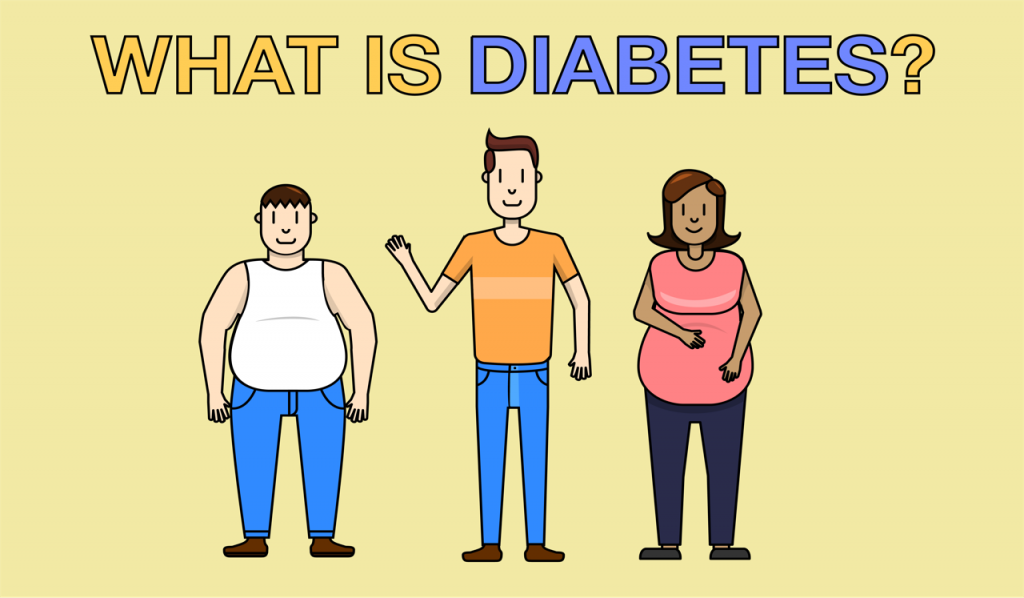
Diabetes is one of the leading causes of premature death globally. The incidence of Diabetes has been increasing over the recent decades. This video aims to provide a high level introduction / overview of what diabetes is, the differences and types of diabetes, and the symptoms/complications of diabetes.
In many languages, Diabetes is known as the sugar disease. That’s because diabetes is a way to describe how your body deals with sugar. Your pancreas is supposed to produce insulin which tells the body to either use the sugar for energy, or store it in the cells.
When you are diabetic, your body either doesn’t respond as well to the insulin, or, you can’t produce insulin.
This leaves high levels of glucose in your blood, leading to many health complications – such as heart disease, stroke, kidney disease, nerve damage, eye problems, foot problems, and even death.
How big of a problem is diabetes?
There are over 422 million people with diabetes today. This is a massive jump from 1980, where there were 108 million people with diabetes. If you think about it, That’s an incredible jump, only in the last 35 years. It is estimated that around half of diabetics have not been diagnosed yet.
The International Diabetes Federation estimates that Diabetes was responsible for 5 million deaths in 2015. This means 10 people died every minute. It’s a big business. Over US$673 billion was spent on Diabetes related health care.
That’s around the size of Pennsylvania or Switzerland’s economy, or more than twice the size of Hong Kong or Ireland.
How do you become diabetic?
Type 1 usually develops at a very young age and is inherited. White blood cells attack the pancreas leaving your body unable to produce any insulin. People with Type 1 Diabetes must take insulin every day to live. Type 2 diabetes can develop at any age, but usually occurs in older people. This is where the body does not produce enough insulin, you become resistant to insulin, or at the extreme, even stop producing insulin. This is the most common form of diabetes, accounting for 90-95% of all cases.
You are more likely to develop diabetes if you are older, have a family history of diabetes, are from certain ethnic backgrounds, but most importantly, it is your lifestyle choices – such as being inactive, and following a poor diet – which leads to high blood pressure, being overweight or obese.
Gestational diabetes occurs during pregnancy in response to changes in hormones. It usually goes away after giving birth. But, the chances of developing Type 2 diabetes are increased.
Symptoms – How do you know if you are diabetic?
There are virtually no symptoms when you are pre diabetic. Some of the early symptoms of diabetes will include unexplainable fatigue. You may be more hungry than usual. You will want to urinate more frequently – this is because your kidneys are trying to remove the sugar from your blood.
To support the kidneys and increased urination, you will also become more thirsty, with dry mouth and quite often bad breath. This may also lead to mild dehydration, showing up as dry, itchy skin. Sugar will also damage the optic nerves and blood vessels in the eye leading to blurry vision.
As your condition worsens, you may also be susceptible to yeast infections. Yeast feeds off the sugar in your body. You must be careful about cutting yourself, as nerve damage and reduced blood flow means that your wounds heal much slower. You may also experience numbness and pain in your feet and legs.
What can you do?
Make sure you eat a healthy diet with lots of fruits and vegetables, be active and include a variety of different exercises regularly. Particularly focusing on building muscles and ensure you are having annual check ups to catch diabetes early on.
If you liked this video then please help us raise awareness by Sharing this video. You can also like our Facebook Page and subscribe to our YouTube Channel.
